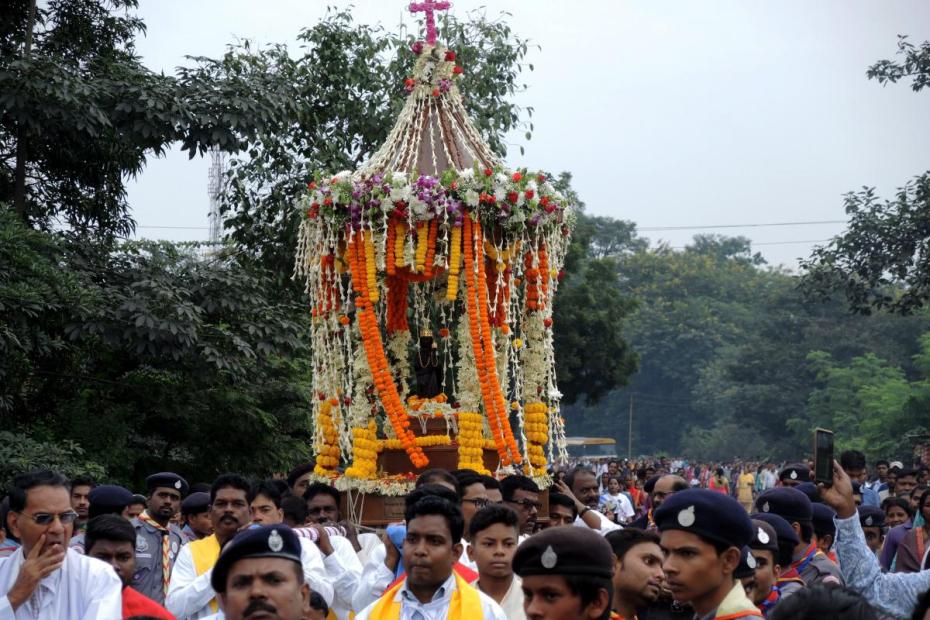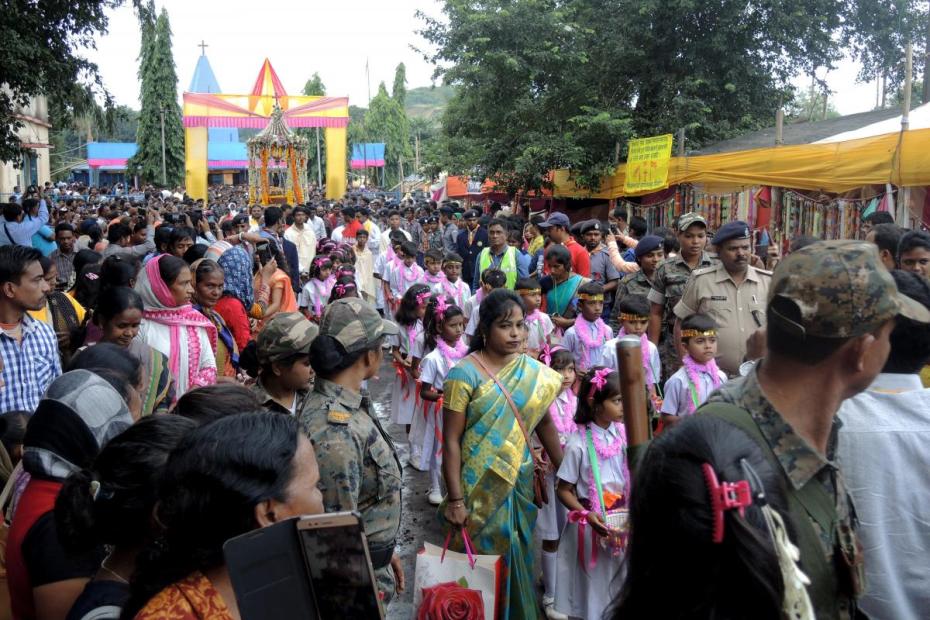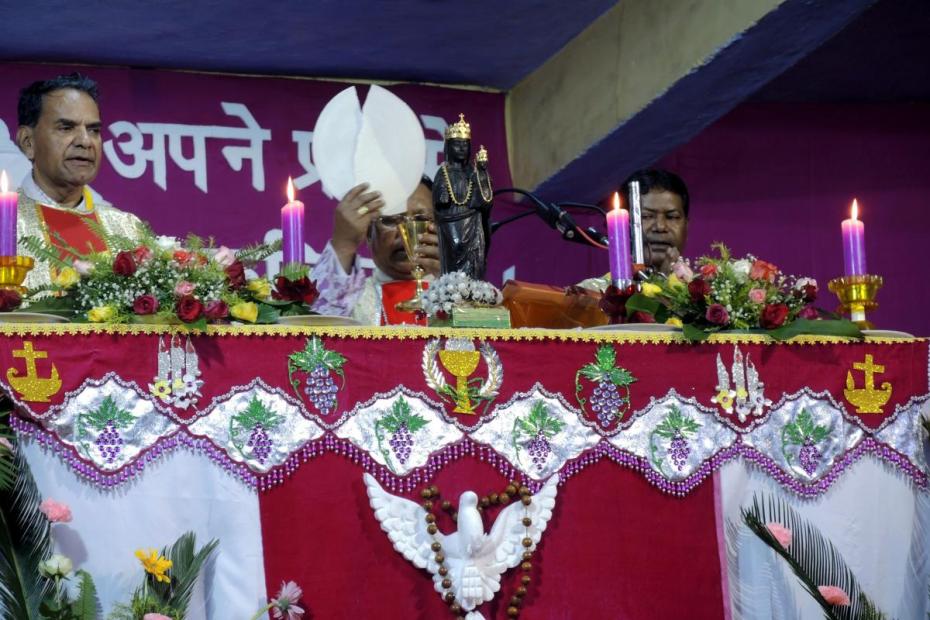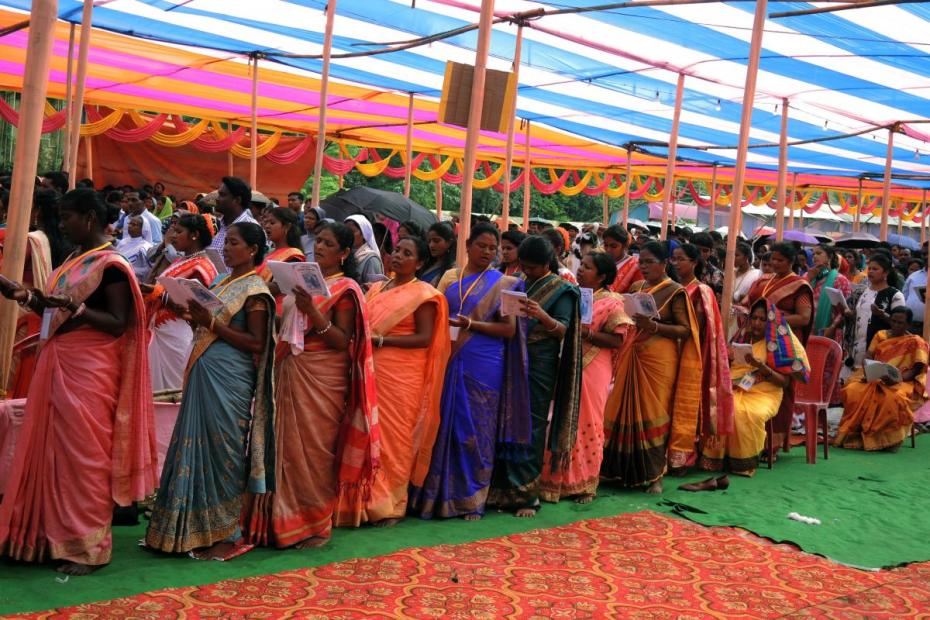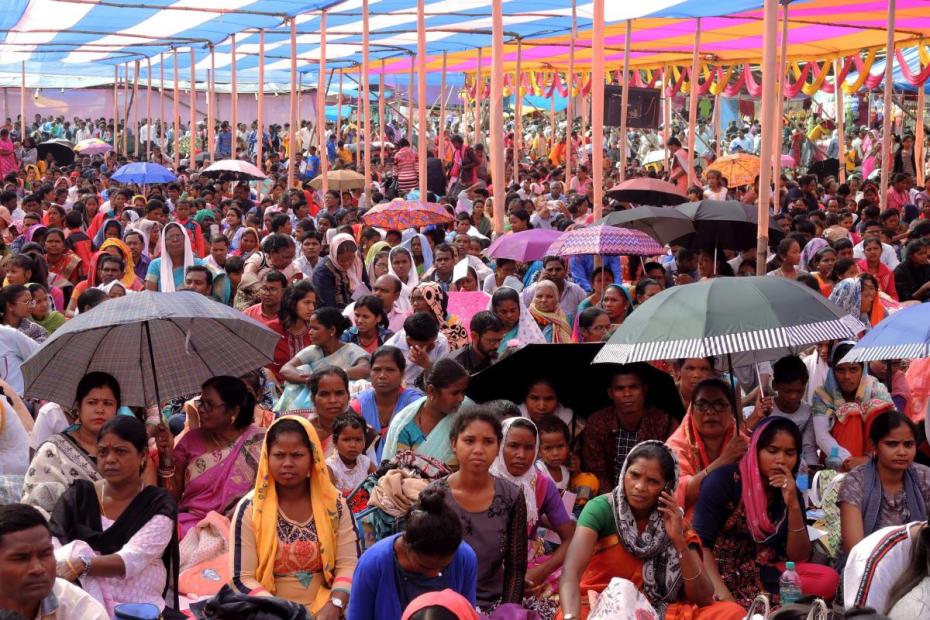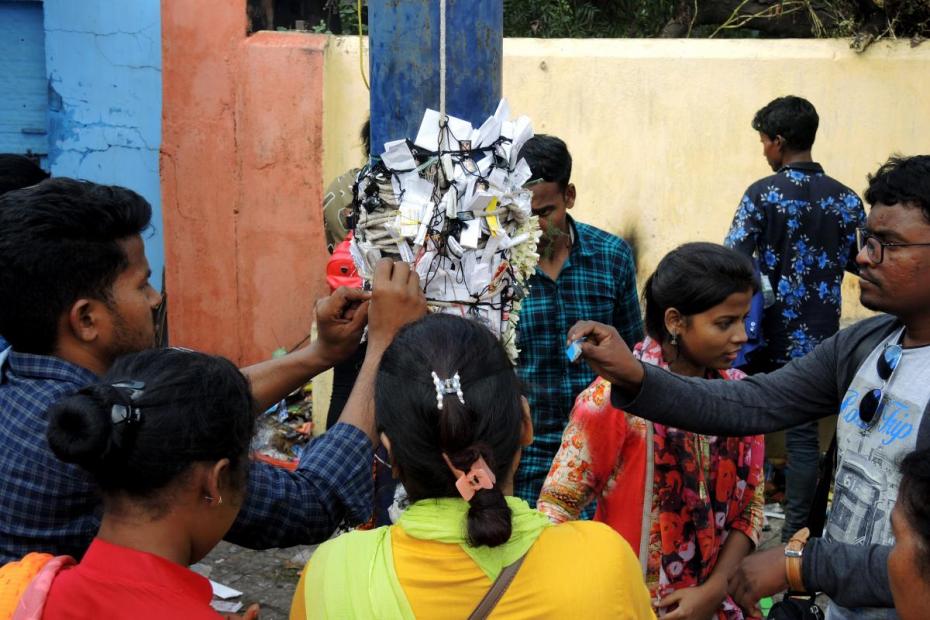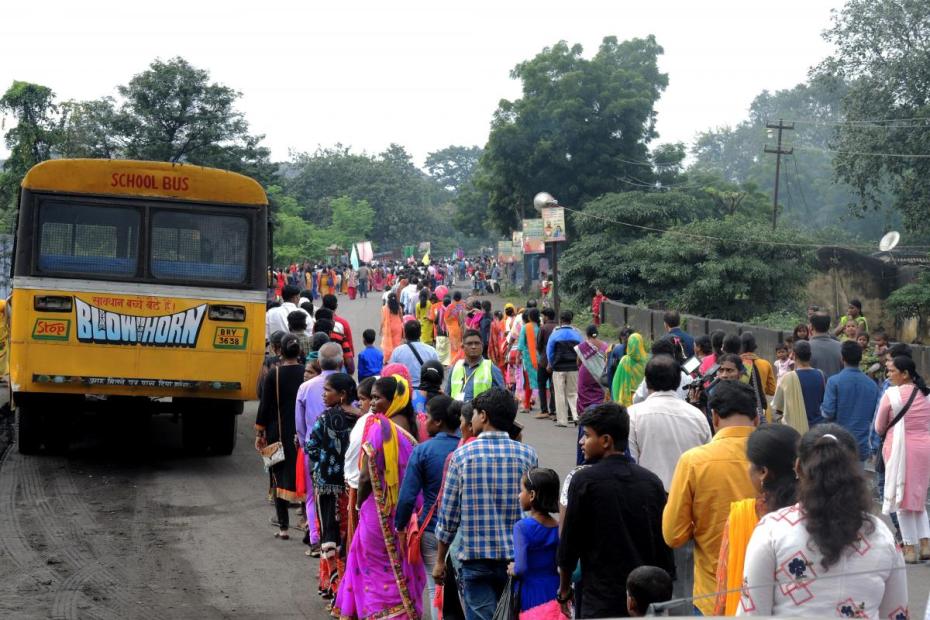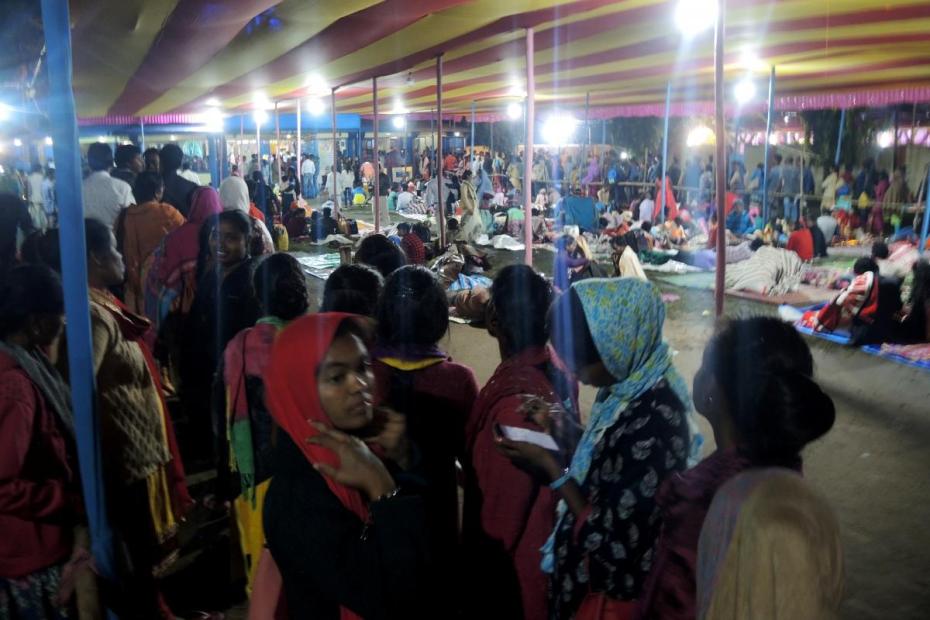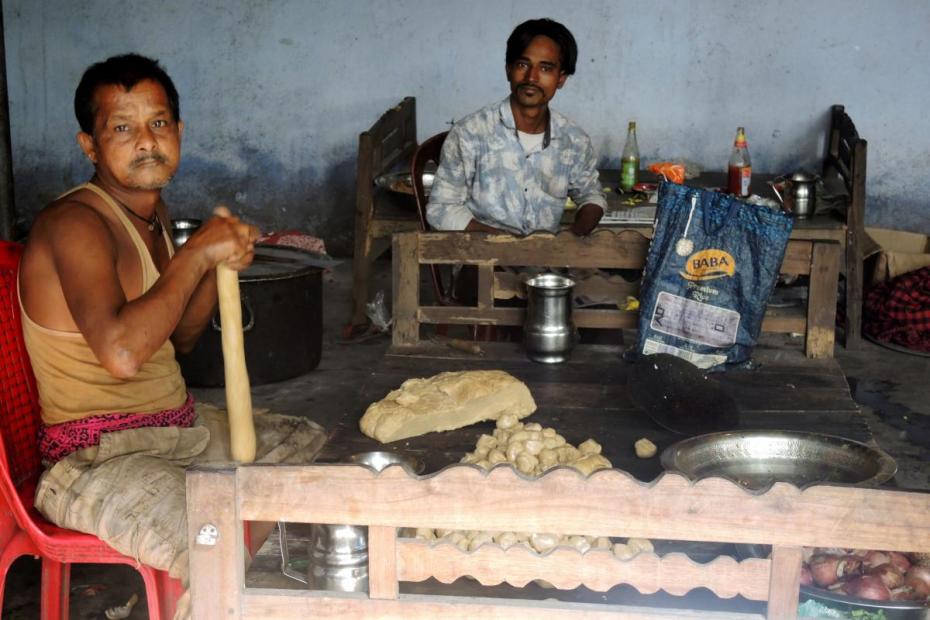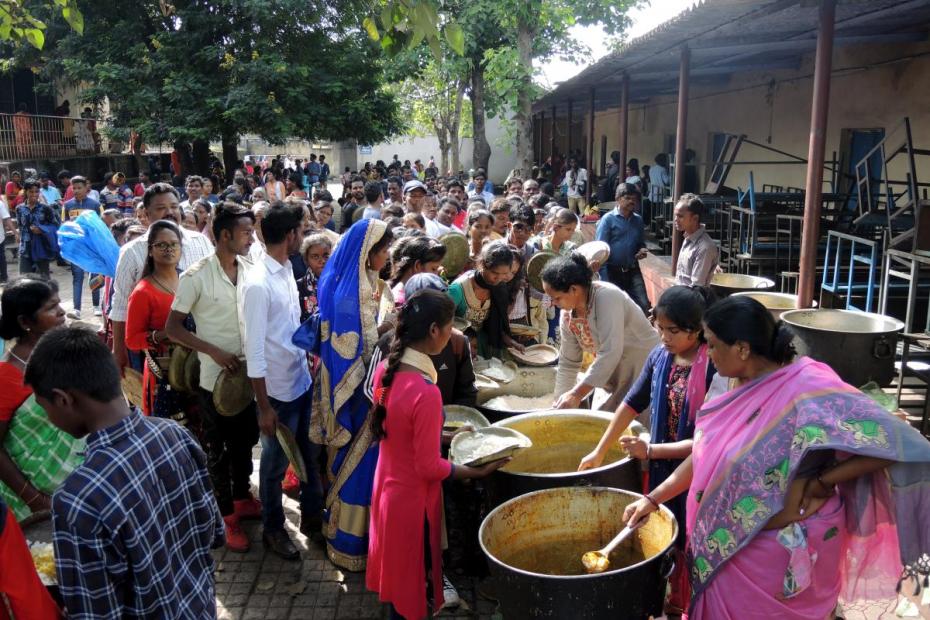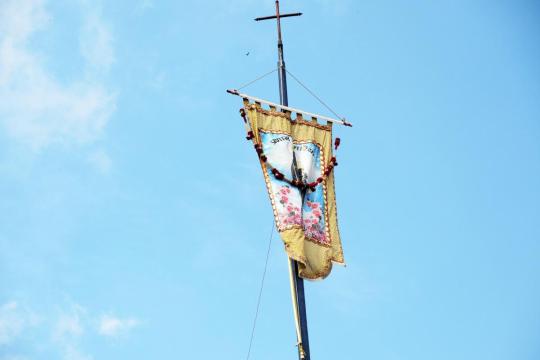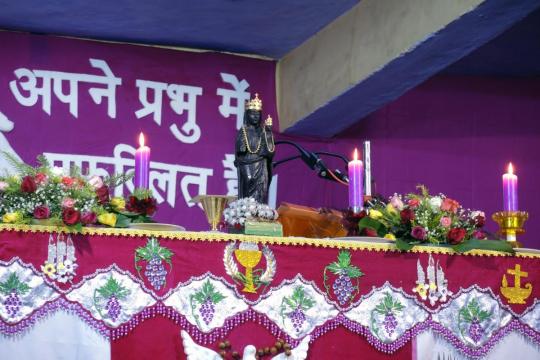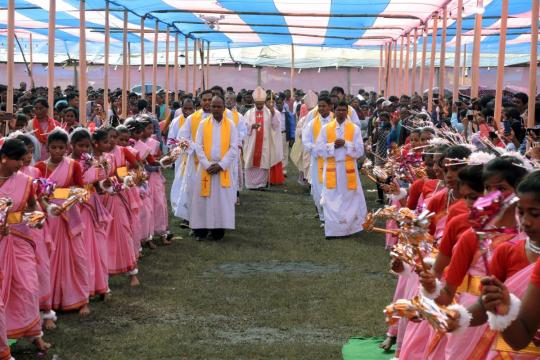The North Indian state of Jharkhand is known for its forests and coalfields. It is also home of the “Miraculous Mother of the Coalmines,” known in Hindi as “Dhori Mata”: a black, wooden statue of Madonna with child that was found in the nearby Dhori Coalmine in 1956. The shrine to Dhori Mata is in the village of Jarangdih, about 80 km south of the diocesan seat in Hazaribag and about 90 km north of Jharkhand’s capital, Ranchi.
Every October there is a special festival held in honor of Dhori Mata that is attended by tens of thousands of Catholics, Hindus and Muslims. In addition to a viewing of the statue and participating in procession that honors her, there also is a special Roman rite Mass adapted to the tribal or Adivasi culture, celebrated by the Bishop Anand Jojo of Hazaribag, and attended by regional political party leaders in addition to a large crowd of predominately Catholic laity.
Some devotees come in gratitude for favors received from Dhori Mata and others come in hope of future blessings. But while the discourse of miracles surrounding Dhori Mata is what might strike most observers as the dominant theme for the feast, what is equally important is how a festival dedicated to the Virgin Mary—something familiar to Catholics all over the world—reflects North Indian cultural sensibilities and concerns.
